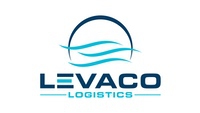Editorial by Mr. Steve Matthews,
Editorial Director of Container Shipping & Trade
Shipping consultancy Drewry in its recent Container Forecaster pointed to what it described as a toxic mixture of overcapacity, weak demand and aggressive commercials pricing threatening the profitability of the liner shipping industry for the rest of 2015.
The reporter said: “The only way to address this is for carriers to make much more radical action to address overcapacity which is now plaguing virtually all major trade routes.”
It highlighted that each quarter brings another 10 to 15 ultra large container vessels into the market. These behemoths need to operate with a high level of capacity utilization in order to benefit from their economies of scale, which many are now struggling to achieve.
Spot freight rates on the routes where they can operate have plunged into loss making territory. Carriers have invested heavily in these ships and want to keep them operating. Yet, despite all these indicators, leading ship operators continue to place more orders in an effort to maintain their market shares. According to Drewry another 1.14 million teu has been added since January. Some 129 ships of 8000 teu and larger will be seeking deployment in the second half of 2015 alone.
Market leader Maersk Line has 11 more 19630 teu ships, with options for 6 more, on order for delivery in 2017 and 2018 and has recently confirmed order for nine 14000 teu ships, with options for eight more, for delivery in 2017. As outlined in this issue, earlier this year Orient Overseas Container Line placed orders for a series of 20100 teu vessels. This was despite company chairman Tung Chee Chen’s observation that the industry tends to over-invest in newbuilds to maintain market share, grow revenue in the cycle and protect market share, grow revenue up in the cycle and protect market share in the down cycle, leading to perpetual excess capacity.
Other containers lines have also placed contrasts for more ultra large vessels and there is continued speculation about yet more orders by various operators as they strive to keep up with the market leaders.
The true level of overcapacity is partially hidden by the fact that the ships have been slow steaming since demand has slowed and in response to high fuel prices. There has even been speculation that some operators might be tempted to speed ships up again since fuel prices have fallen. Drewry said that operators will struggle to continue reducing unit costs, as bunker costs have stabilised.
Speaking at the ABS-led session on optimizing asset performance at the Norshipping event in Oslo in June, Niels Bjorn Mortenses, director, head of regulatory affairs, Maersk Maritime Technology said that the operator is looking way at ways of optimizing vessel utilization. He said “we are trying to operate ships at their optimum design speed, redesigning and reconfiguring ships for optimisation at slower speeds- replacing bulbous bows, propeller modifications and optimizing machinery performance, including retrofitting where necessary – and optimizing container capacity by reconfiguring accommodation blocks and lashing bridges.”
However much carriers design, build and retrofit more efficient vessels and operate them optimally, their efforts risk being undermined by the continuing ordering of massive new capacity. Now that the container market appears to be in new area of slower growth, somehow that cycle needs to be broken so that the focus is firmly on greater efficiency overall and not on vessel size and market share.


